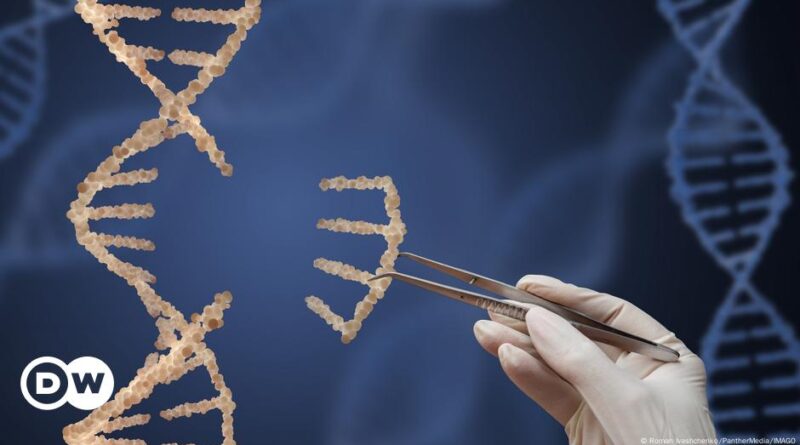Bridging the genomics gap: How to improve indigenous health – DW – 08/12/2024
Among the subtle genetic differences are the factors that determine why many of us develop diseases, such as cancer, and how we respond to their treatment.
We share 99.9% of human DNA – the sequence of genes, or biological information, that allows us to function and live. But the 0.1% of human DNA that is different in each of us can reveal why we have different health outcomes.
There is a lot of research on genetics and genetics because these aspects can explain how genes are passed from one generation to another, and how our genes are how did you meet? – ours genetics – make us more susceptible to disease.
The problem is that more than 80% of genetic studies involve people from Europe only. As a result, they do not represent more than 20% of the world’s population. And this leads to what some experts call unfair in medicine – or “genomics gap”.
“There is an injustice in medicine, especially in genetics: we know a lot about the genetics of diseases in people of European descent. [Europeans or US-whites] than people of other ancestry,” said Eduardo Tarazona-Santos, a geneticist at Universidade Federal de Minas Gerais, Brazil.
Tarazona-Santos is working to correct this injustice, collecting data on genetic differences in two indigenous populations of Latin America – one in the Andes highlands and the other in the Amazonian lowlands.
Published in a newspaper A cellThe study found that subtle genetic differences caused different responses to blood thinners and high cholesterol medications.
The genetic differences were as great as those seen between Europeans and East Asians, despite the two groups living only 100 to 200km (60 to 125 miles) apart.
“What we found highlights the need to consider that races that are often considered homogenous, such as Native Americans, are actually not homogenous,” Tarazona-Santos told DW.
Genetic differences between indigenous groups
The Tarazona-Santos team analyzed genetic data from 249 individuals from 17 indigenous cultures. “We examined the prevalence of genetic variants that affect drug response,” said co-author Victor Borda.
They found differences in two genes – one called ABCG2 and the other VKORC1 – between the highlanders of the Andes and the inhabitants of the Amazonian lowlands.
“These genetic variants are important because the variation of ABCG2 influences the effectiveness of the treatment of simvastatin, which is used to treat high cholesterol levels. Those people who have the “wrong” variant should be use different drugs,” said Borda.
But they found that only 2% of Andeans would need another treatment to simvastatin, while 14% of Amazonians would need another.
The results also show that variants of the VKORC1 gene can influence the response to the drug warfarin, which is used to treat blood clots and reduce the risk of heart disease and stroke.
“We found that 69% of Andeans versus 93% of Amazonians would need a lower dose of warfarin, due to [their having] the VKORC1 gene,” said Tarazona-Santos.
Segun Fatumo, a geneticist at Queen Mary University of London, UK, says that the study provides an example of why geneticists need to examine other variants.
“There are many other people like that [the Andean and Amazonian indigenous people] around the world that need to be studied in the same way,” said Fatumo.
The right medicine can help the natives
Precision medicine uses a person’s specific health factors, including genetics, to tailor treatment to their needs – rather than the usual “one-size-fits-all” approach.
“It can help us to give a more precise treatment to a person based on their genetics, as this study shows with drugs like warfarin,” said Fatumo.
But until now, precision medicine using genetic information has helped people from Europe a lot. Tarazona hopes that new research will bring appropriate medicine to people from indigenous cultures in the Brazilian health system.
Tarazona-Santos says this could improve treatment for children with leukemia and avoid adverse drug reactions, or treatment with antidepressants and other heart diseases.
Non-species genomic studies are ‘killing themselves’ in science
Fatumo said that science has done itself “a disservice” by not dividing genetic research quickly: “There are many other genetic variants that can be found in other populations. They can help find treatments new, and [let us] understand why some drugs are more dangerous or beneficial for some people but not others.”
But things change. There are genomes being developed in Africa and Asia, as well as Latin America, often as part of larger programs, such as The Nigerian 100K Genome Project.
And the Tarazona-Santos team has begun work on a larger data set, sequencing 60,000 Brazilian genes from different cultures.
New global genetic research is beginning to bear fruit. “We have treatments that reduce cholesterol and prevent heart disease. PCSK9 inhibitors were discovered because some people of African ancestry had different genetic variants in PCSK9 gene that made them have low cholesterol,” Fatumo told DW, adding that there may be more. Similar treatments can be found by studying human gnomes around the world.
Edited by: Zulfikar Abbany
Original source:
The need to exchange genomic studies: Insights from the highlands of the Andes and Amazonians published by Alvim et al. in the journal Cell (August 2024) http://dx.doi.org/10.1016/j.cell.2024.07.009
#Bridging #genomics #gap #improve #indigenous #health
